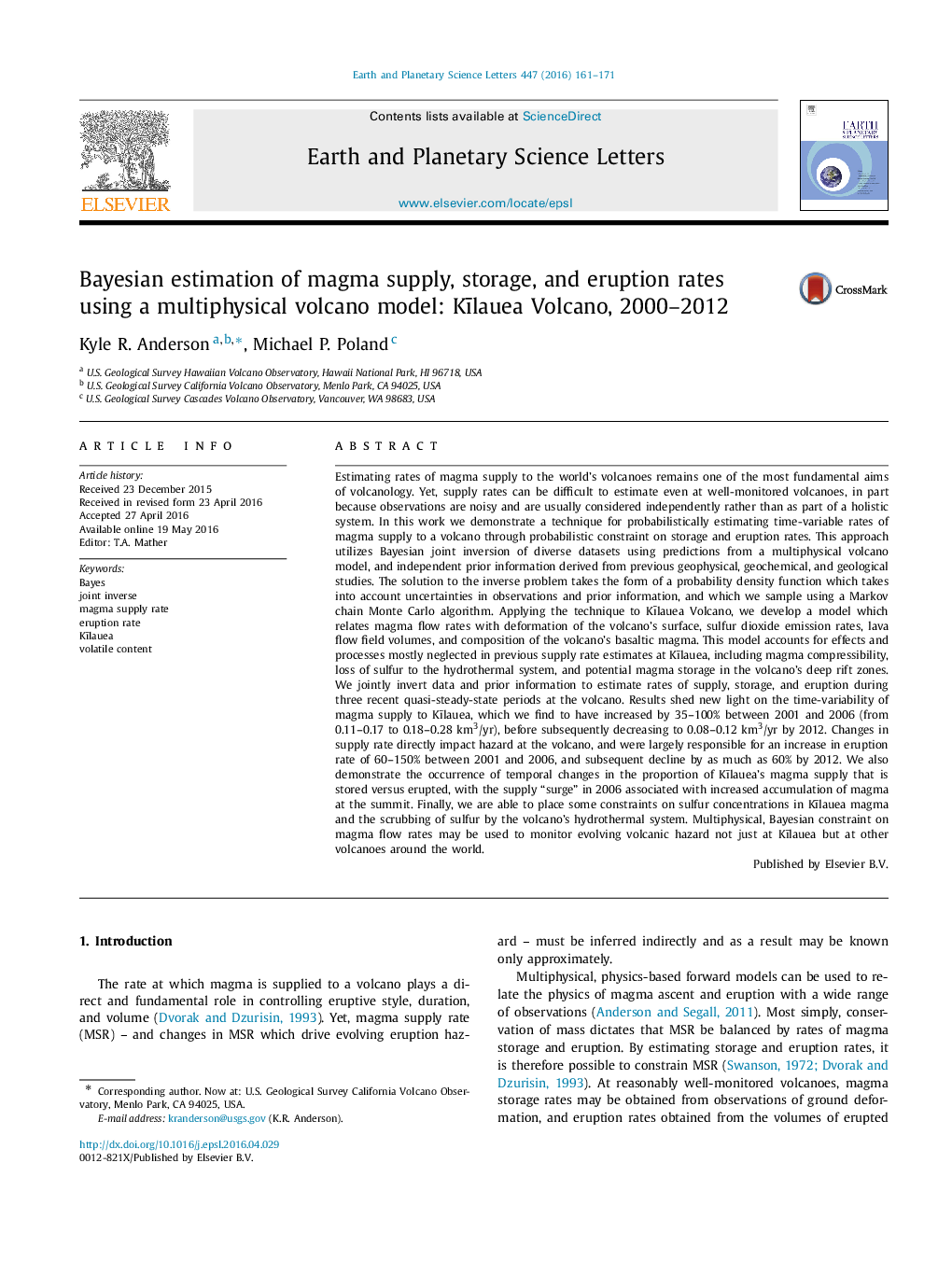| کد مقاله | کد نشریه | سال انتشار | مقاله انگلیسی | نسخه تمام متن |
|---|---|---|---|---|
| 6427480 | 1634709 | 2016 | 11 صفحه PDF | دانلود رایگان |

- A model of Kilauea Volcano is developed which predicts diverse observations.
- Bayes' Theorem relates model, data, and independent prior information.
- Probabilistic rates of magma supply, storage, and eruption are resolved.
- Kilauea's magma supply has waxed and waned from 2000 to 2012.
- Changes in supply control, in part, eruptive hazard at the volcano.
Estimating rates of magma supply to the world's volcanoes remains one of the most fundamental aims of volcanology. Yet, supply rates can be difficult to estimate even at well-monitored volcanoes, in part because observations are noisy and are usually considered independently rather than as part of a holistic system. In this work we demonstrate a technique for probabilistically estimating time-variable rates of magma supply to a volcano through probabilistic constraint on storage and eruption rates. This approach utilizes Bayesian joint inversion of diverse datasets using predictions from a multiphysical volcano model, and independent prior information derived from previous geophysical, geochemical, and geological studies. The solution to the inverse problem takes the form of a probability density function which takes into account uncertainties in observations and prior information, and which we sample using a Markov chain Monte Carlo algorithm. Applying the technique to KÄ«lauea Volcano, we develop a model which relates magma flow rates with deformation of the volcano's surface, sulfur dioxide emission rates, lava flow field volumes, and composition of the volcano's basaltic magma. This model accounts for effects and processes mostly neglected in previous supply rate estimates at KÄ«lauea, including magma compressibility, loss of sulfur to the hydrothermal system, and potential magma storage in the volcano's deep rift zones. We jointly invert data and prior information to estimate rates of supply, storage, and eruption during three recent quasi-steady-state periods at the volcano. Results shed new light on the time-variability of magma supply to KÄ«lauea, which we find to have increased by 35-100% between 2001 and 2006 (from 0.11-0.17 to 0.18-0.28 km3/yr), before subsequently decreasing to 0.08-0.12 km3/yr by 2012. Changes in supply rate directly impact hazard at the volcano, and were largely responsible for an increase in eruption rate of 60-150% between 2001 and 2006, and subsequent decline by as much as 60% by 2012. We also demonstrate the occurrence of temporal changes in the proportion of KÄ«lauea's magma supply that is stored versus erupted, with the supply “surge” in 2006 associated with increased accumulation of magma at the summit. Finally, we are able to place some constraints on sulfur concentrations in KÄ«lauea magma and the scrubbing of sulfur by the volcano's hydrothermal system. Multiphysical, Bayesian constraint on magma flow rates may be used to monitor evolving volcanic hazard not just at KÄ«lauea but at other volcanoes around the world.
Journal: Earth and Planetary Science Letters - Volume 447, 1 August 2016, Pages 161-171